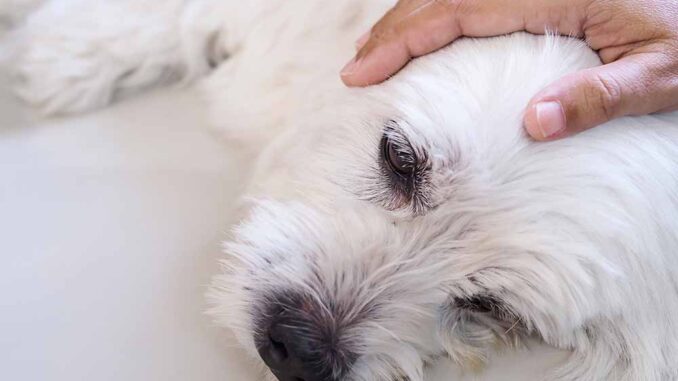
Ugh, bedbugs! Even though you have never encountered them, they are something you probably know about. These tiny creatures can be found in furniture, mattresses, headboards, and even doggos’ beds. They terrorize your home until they’re gone!
Bedbugs can be spread in many ways. But did you know that your dog could also carry them? Bedbugs can attach to your dog while they are out and about, and then return with them to infest your house.
Is it possible? It’s possible, although not likely. It can save you and your pup a lot of hassle by giving your dog a routine check, as well as looking for signs that your dog might have bedbugs or is carrying them.
Below is a guide that will help you identify signs your dog may have bedbugs. It also includes tips on how to train your dog to be more comfortable with routine bedbug checks and how to combat them in your home.
Bedbugs in your Dog

Bedbugs are a parasite that feeds off blood so it is possible for your dog to be bitten. There are signs that your dog may be letting you know that your home is infested by bugs, whether they were brought in by you or your dog.
Your poor dog’s itching is a sign that something is wrong. Dogs do scratch, but not at the speed your dog is experiencing when hundreds of bedbugs are crawling all over its body.
Your dog may develop red or welt-like lesions on its skin. This is a sign that a bug has infested them. You should be looking out for signs such as hives, blisters and skin irritations on your pet. If your pet is losing a lot of fur, shedding excessively, or has patches hair, it’s possible that bedbugs might be biting.
Bedbugs will not cause any serious illness to your dog. However, they can be an annoyance and discomfort for your dog, which is not what you want.
Historical Causes of Bedbugs

We believe that bedbugs were first caught in caves in the Middle East in 400 BC. They have been feeding off us and our animal roommates ever since.
The bedbug is a small, devilish little creature that loves to hitchhike. There are many stories of bedbug infestations that start with the little creatures crawling onto your dog’s fur or bedding and making their home inside your house.Although they won’t live in your dog’s fur forever, they will use it as a taxi service for getting to their destination. They can also hop onto your pants, slide into your suitcase or pack themselves away in your purse to create a cozy place for you and your dog. They can get into your home and make it difficult to exterminate once they have established themselves.
The Science of Bedbugs and Dogs

Let’s start by explaining what bedbugs are and how they can impact your doggo.
Bedbugs can be quite gross, to use a less evocative term. They can be annoying and difficult to eradicate. Cimicidae is a family of insects that includes bedbugs. There are many species of bedbugs, but only two are known to be associated with humans.
These tiny bedbugs are very small! They can grow up to 1-7mm in length, are brownish-red and wingless, and feed on blood. Because they infest areas where animals and people sleep, they’re known as bedbugs.
Your dog or your mattress will be a good place for females to lay eggs. These eggs will then hatch into nymphs and become adults. They will continue this cycle for 8-10 days, so if left alone they can become a nuisance. They will either feed on your dog or you, so it is important to get rid of them!
How to train your dog to deal with bedbug prevention

Your dog must be able to communicate with the vet in all situations. You should take your dog to the vet if they are infested by bedbugs.
Bedbugs are not a serious threat to dogs. However, they can cause skin irritations and marks on the pup’s body. You’ll want to get that checked out immediately. You can help your dog associate the vet with a positive experience by giving them lots of treats, love, and appreciation for being a good sport.
Your vet may give you medicine to help your dog with its itching while you get rid of the bedbugs. Your dog should be trained to take the pills if this is the case. To get your dog to take their pills, you can teach him to throw and catch, to eat the medicine with their food, or to just take it from your hand.
Also, ensure your dog is comfortable with a routine pest check. While you inspect your dog for bugs, teach them to “sit” or “stay”. After they have done well, give them lots and lots of treats!